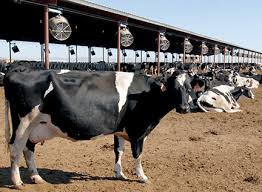El Niño drought could weigh on cotton output
Zimbabwe’s cotton output is likely to be lower this year due to a combination of factors, including inputs-related distribution challenges and the effects of drought, a farmer organisation has said.
Mr Stewart Mubonderi, chairman of the Cotton Producers and Marketers Association said the distribution challenges emanated from the shift of the responsibility from the Cotton Company of Zimbabwe (Cottco) to the Grain Marketing Board (GMB). The El Niño -induced drought also saw the country recording lower yields this year.
The Government, through Cottco, is the country’s largest financier of cotton and supports nearly 300 000 households with free inputs including seed and fertiliser.
Last year, Zimbabwe produced approximately 90 000 tonnes of cotton. Of this, 85 percent was funded by Cottco, with the remainder financed by private companies.
While initial indications suggest a potential decrease in cotton production this year, the official estimate of the crop size will be determined through a validation exercise beginning in the last week of March. This delay, compared to prior seasons, is due to a later planting in the Lowveld region.
Mr Mubonderi noted Cottco’s decentralised network may have been more accessible to smallholder farmers, particularly those in remote areas with limited transportation options. The Government said shifting the distribution responsibility from Cottco to GMB was aimed at combating corruption, addressing inputs abuse, and enhancing accountability in the cotton farming sector.
“Cottco’s decentralised distribution network was more accessible for small-scale farmers, particularly those far from GMB distribution points, due to limited transportation infrastructure in those areas,” said Mr Mubonderi in an interview this week.
“Shifting distribution from Cottco to GMB posed accessibility challenges for some farmers, particularly those in remote areas. However, it is important to note that El Niño remains the primary factor to have largely contributed to lower cotton output.”
El Niño, a cyclical climate phenomenon, has led to drought conditions across Southern Africa, including Zimbabwe. This raises significant concerns about food security in the region, as crops and livestock are significantly impacted.
The phenomenon disrupts weather patterns, leading to moisture stress. Insufficient rainfall leads to deficits in soil moisture, hindering plant growth and significantly reducing crop yields. This is particularly detrimental for maize, a staple food crop in the region.
Zimbabwe’s cotton production peaked at 351 000 tonnes in the 2010/11 season but then declined significantly, reaching a low of 28 000 tonnes in 2013/14 season.
This was the lowest output in nearly two decades, following the 1992 drought. Several factors contributed to the decline, including reduced cotton input packages from private contractors due to concerns about side marketing, and low cotton prices that incentivised farmers to switch to other cash crops such as soybeans.
Production has however shown signs of recovery since the introduction of the free inputs scheme, with output increasing despite occasional dips in years affected by drought.
In addition to the state-assisted scheme, private participation in cotton financing has also increased, with approximately six companies now involved.-herald.cl.zw










